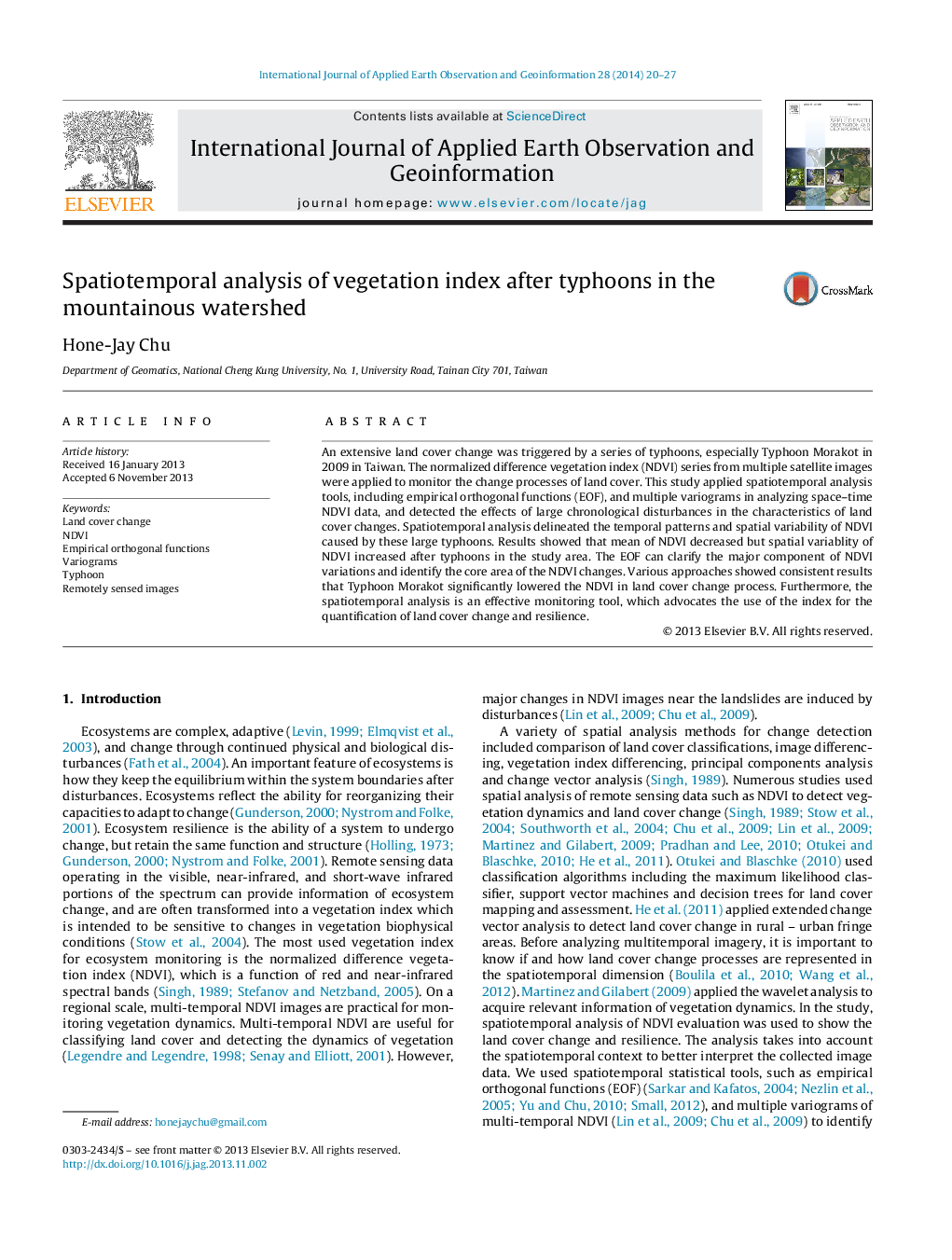| Article ID | Journal | Published Year | Pages | File Type |
|---|---|---|---|---|
| 6348966 | International Journal of Applied Earth Observation and Geoinformation | 2014 | 8 Pages |
Abstract
An extensive land cover change was triggered by a series of typhoons, especially Typhoon Morakot in 2009 in Taiwan. The normalized difference vegetation index (NDVI) series from multiple satellite images were applied to monitor the change processes of land cover. This study applied spatiotemporal analysis tools, including empirical orthogonal functions (EOF), and multiple variograms in analyzing space-time NDVI data, and detected the effects of large chronological disturbances in the characteristics of land cover changes. Spatiotemporal analysis delineated the temporal patterns and spatial variability of NDVI caused by these large typhoons. Results showed that mean of NDVI decreased but spatial variablity of NDVI increased after typhoons in the study area. The EOF can clarify the major component of NDVI variations and identify the core area of the NDVI changes. Various approaches showed consistent results that Typhoon Morakot significantly lowered the NDVI in land cover change process. Furthermore, the spatiotemporal analysis is an effective monitoring tool, which advocates the use of the index for the quantification of land cover change and resilience.
Related Topics
Physical Sciences and Engineering
Earth and Planetary Sciences
Computers in Earth Sciences
Authors
Hone-Jay Chu,
